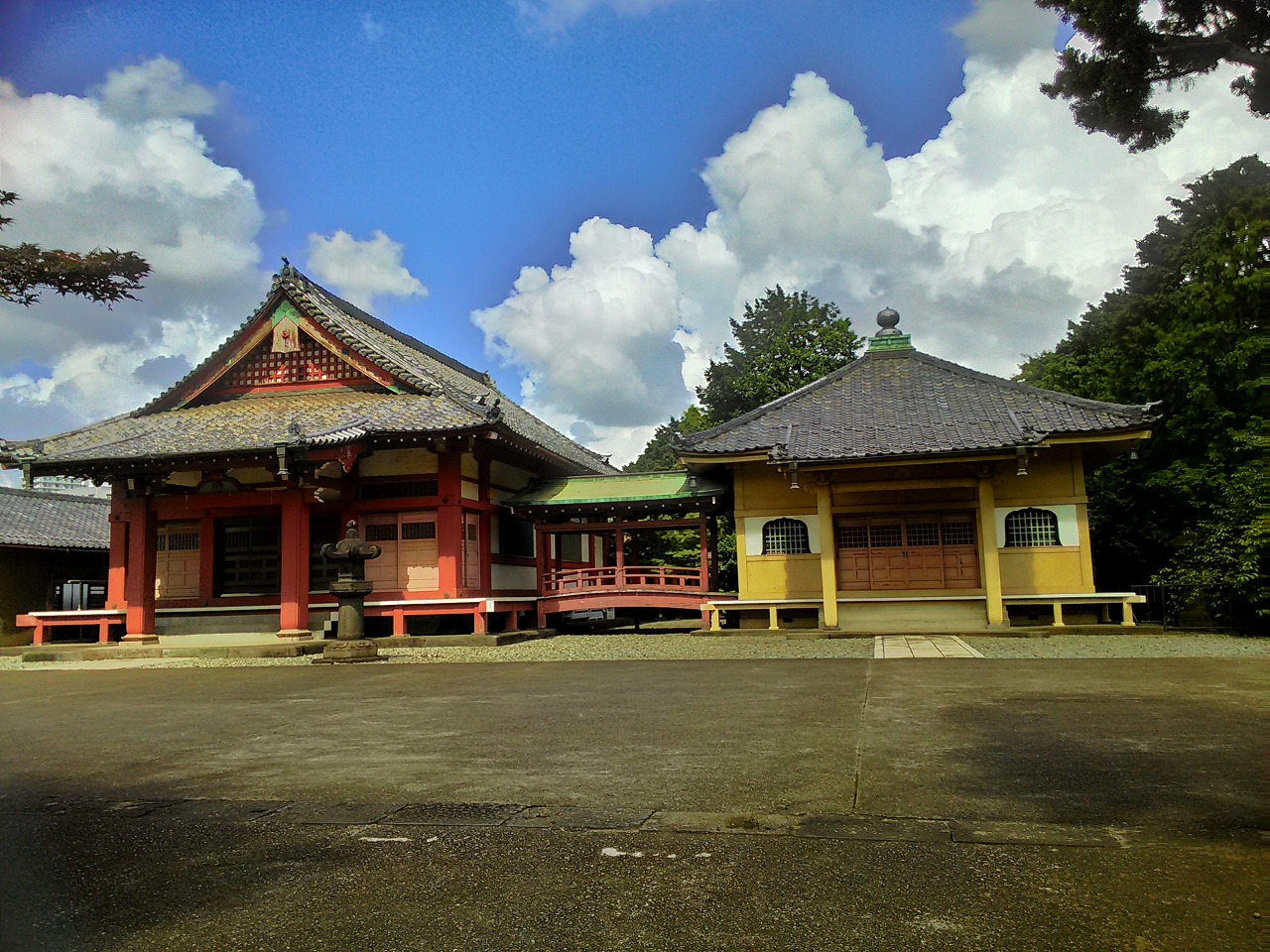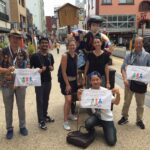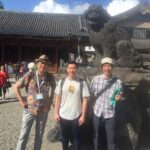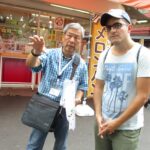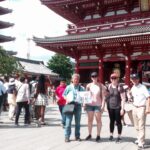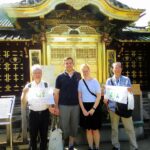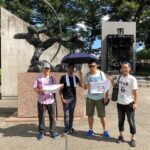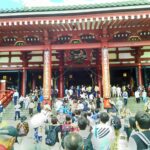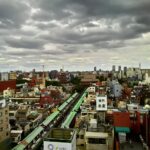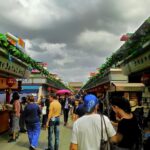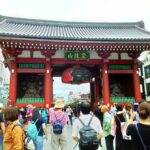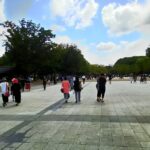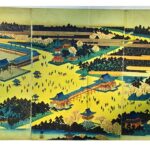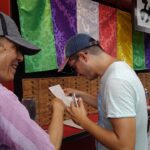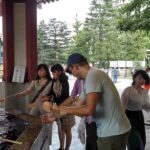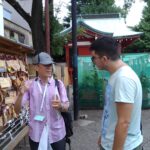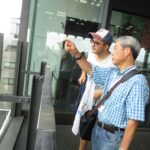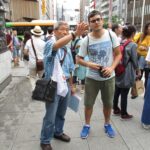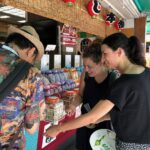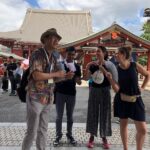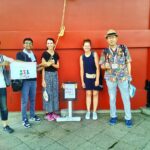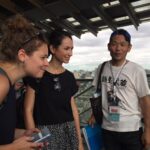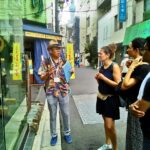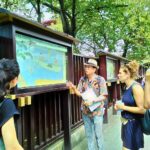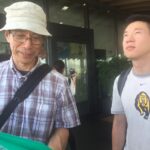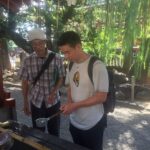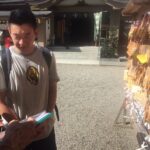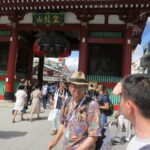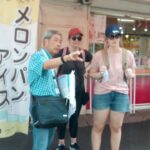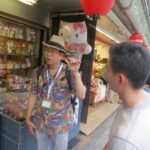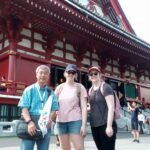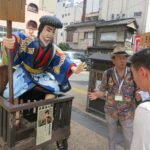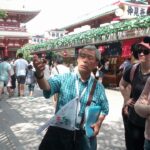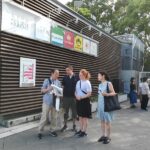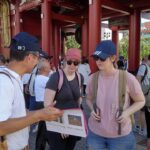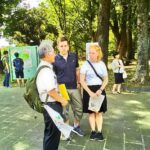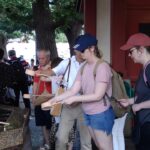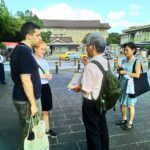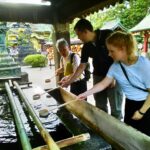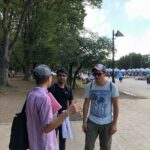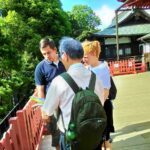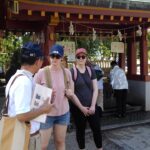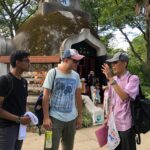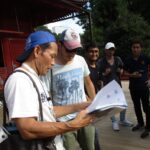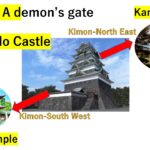Thank you for joining our Tokyo Free Walking Tour in Ueno and Asakusa.
On the day of our two-guided tours, the 8th of September, we welcomed 12 guests on our walking tour.
These people came from different regions of the world, including Australia, Denmark, France, Germany, Spain, U.K and U.S.
Strong typhoon was approaching Japan, and Japanese meteorological agency repeatedly issued the alert.
In Tokyo, however, we had strong sunshine and occasionally scattered clouds in the sky, and the daytime temperature rose up to around 30 degrees Celsius.
Seemingly, scorching heat of the sun has not been pushed back yet.
Under these circumstances, we met twelve guests in Asakusa and Ueno.
Some of the attendants of Asakusa Morning Tour made their time to join Ueno Afternoon Tour.
We really appreciate it.
- Sensoji Buddhist Temple
- Views from the roof top of Asakusa Information Center building
- Nakamise Street
- Thunder Gate
- Ueno Park
- Ueno in ancient time
Around 10 a.m., we started a morning tour at Asakusa.
After overlooking the entire Asakusa district from the rooftop of the Asakusa Information Center, we moved to a gorgeous gate called Kaminarimon Gate, or a thunder gate in English.
After passing through the 250 meters shopping stretch, we witnessed temple visitors waiting for their turn in a long line to worship.
They’re going to make wishes like improving their luck.
At 1:30 p.m., we started our stroll in the Ueno Park for 90 minutes.
In this Ueno tour, the historical background of this peaceful park is one of the main attractions because this area used to be huge temples- Kaneiji Buddhist Temple, which served as the family temple of Tokugawa shogunate in Edo period.
This Buddhis establishment is a good subject for talking about religious faith called “kimon“.
Kimon, which is referred to as the “Demon’s Gate, is considered an unlucky direction. It is believed that if a property or a person’s action faces that certain direction, it will be plagued with bad luck.
This undesirable direction is commonly believed to be a diagonal direction traversing north-east and south-west.
This notion dates back to ancient times, in which Japanese people sought ways to avoid misfortunes such as natural disasters and accidents that was observed to come from the kimon direction.
- Kaneiji Buddhist Temple in Ueno
- Zojoji Buddhist Temple in Minato Ward
In Edo period, the Tokugawa shogunate established the Kaneji Buddhist Temple in Ueno, which is in the north-eastern direction of the Edo Castle, and the Zojyogi Buddhist Temple at other place which is on the South-west side. The Edo Castle served as the shogun’s residence during Edo period, is now the Imperial Palace in Tokyo.
These Buddhist temples are strategically placed in kimon direction as they act as guardian temples to protect the majestic castles from natural disasters.
Even nowadays, it’s interesting to see that this belief is still taken into consideration when making floor plans for residences and office buildings.
We deliberately layout spaces in buildings like entrances, kitchens, and bathrooms, in hopes of placing the center of our homes or important parts of our office buildings away from the kimon direction.
This is because of the belief that these areas can be prone to intruders, fires, and water damages.
In effect, these concerns might lead to some unexpected misfortune in the household.
Recently, Japan has greatly improved when it comes to science and technology, however, it is interesting to note that superstitions are still in the collective consciousness of Japanese people, due to a strong sense of belief passed down from our ancestors.
(By Arac)

